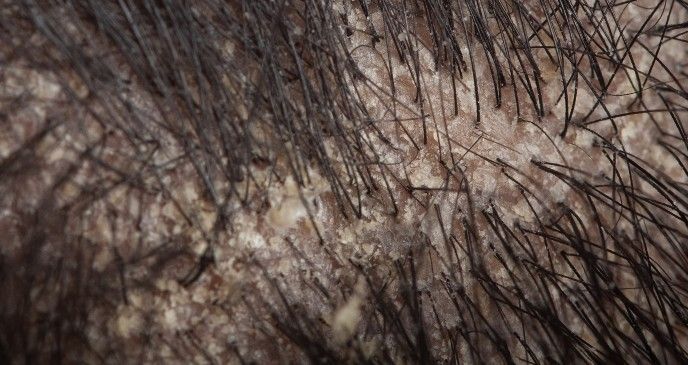- Acne
- Actinic Keratosis
- Aesthetics
- Alopecia
- Atopic Dermatitis
- Buy-and-Bill
- COVID-19
- Case-Based Roundtable
- Chronic Hand Eczema
- Chronic Spontaneous Urticaria
- Drug Watch
- Eczema
- General Dermatology
- Hidradenitis Suppurativa
- Melasma
- NP and PA
- Pediatric Dermatology
- Pigmentary Disorders
- Practice Management
- Precision Medicine and Biologics
- Prurigo Nodularis
- Psoriasis
- Psoriatic Arthritis
- Rare Disease
- Rosacea
- Skin Cancer
- Vitiligo
- Wound Care
Article
STRATUM Phase 3 Trial: More Data on Roflumilast Foam 0.3% for Seborrheic Dermatitis
Author(s):
After reporting initial data earlier this year, investigators presented a fuller analysis in a poster at the 2022 SDPA Annual Fall Dermatology Conference.
(Adobe Stock)

Patients with seborrheic dermatitis (SD) achieved greater symptom clearance with roflumilast foam 0.3% versus vehicle treatment in the phase 3 STRATUM trial (NCT04973228). The topical treatment was well-tolerated and there was no evidence of local irritation.
After reporting topline results earlier this year and more data in September at the Academy of Dermatology and Venereology Congress (EADV), investigators presented a fuller analysis of the phosphodiesterase type 4 inhibitor in a poster1 at the Society of Dermatology Physician Assistants (SDPA) 20th Annual Fall Dermatology Conference.
The phase 3 randomized, parallel-group, double-blind, vehicle-controlled trial sought to assess the efficacy of the investigational once-daily topical foam formulation in patients ≥ 9 years old with at least moderate SD affecting the scalp and/or non-scalp areas. The primary efficacy end point was Investigator Global Assessment (IGA) Success (IGA of Clear or Almost Clear plus ≥ 2-grade improvement from baseline) at Week 8.
A total of 457 participants with SD were randomized to either roflumilast foam 0.3% (n = 304) or vehicle (n = 153) for 8 weeks, and patient demographics and disease characteristics were similar across both groups. The mean age was 43.2 (16.8) and 41.8 (17.5) in the treatment versus vehicle arms, respectively. In the roflumilast group, 50.3% (153) of participants were male compared with 49% (79) in the vehicle group. Mean body surface area affected by SD was 2.89% and 2.98% in the treatment and vehicle groups, respectively.
After 8 weeks, 80.1% of patients treated with roflumilast foam 0.3% achieved IGA Success compared with 59.2% of patients treated with vehicle (P < .0001), with improvement seen as early as week 2.
The study drug also demonstrated improvement for all secondary end points, including itch, scaling, and erythema. At Week 8, more than 60% of participants who had reported a Worst Itch-Numerical Rating Score (WI-NRS) of 4 or higher at baseline experienced a ≥ 4-point reduction in itch when treated with roflumilast foam (63.6% with roflumilast foam vs 42.3% vehicle [P = .0002]).
Of those treated with the study drug, 57.9% achieved an erythema score of 0 at Week 8 compared with 32.7% of those who received vehicle (P < .0001), and 58.2% of those receiving roflumilast foam achieved a scaling score of 0 at Week 8 compared with 37.5% of vehicle (P = .0001).
Roflumilast foam’s safety profile was consistent with previous trials, with overall low incidence of treatment-emergent adverse events (TEAEs) (70 [23.0%] in the roflumilast group compared with 33 [21.6%] in the vehicle group), serious adverse events, and TEAEs leading to discontinuation. The most common TEAEs were COVID-19, urinary tract infection, nausea, nasopharyngitis, application-site pain, and sinusitis.
Local tolerability was favorable, with 97.8% (277) of roflumilast foam-treated participants reporting no or mild sensation compared with 94.8% (134) in the vehicle group at Week 8.
“Topical therapies are the standard of care for the treatment of seborrheic dermatitis, but today’s options come with limitations, including side effects and the inability to use on both hair- and non-hair- bearing areas of the body,” Andrew Blauvelt, MD, MBA, president of Oregon Medical Research Center and lead study author said in a statement ahead of EADV. “Roflumilast foam demonstrated strong efficacy across multiple end points, including 50% of individuals with seborrheic dermatitis achieving IGA clear at week 8. Local tolerability was also highly favorable as reported by both patient and investigator assessments of irritation, burning, and stinging.”
Armed with this data, manufacturer Arcutis Biotherapeutics is planning to submit a New Drug Application to the US Food and Drug Administration in the first quarter of 2023 for roflumilast foam for the treatment of SD after previously receiving approval for the treatment of plaque psoriasis.
Reference:
Blauvelt A, Alonso-Llamazares J, Bhatia N, et al. Efficacy and safety of roflumilast foam 0.3% in patients with seborrheic dermatitis in a phase 3 trial. Poster presented at: SDPA 20th Annual Fall Dermatology Conference; November 17-20, 2022; Miami, FL. Accessed November 16, 2022. https://www.sdpaconferences.org/hub/events/08d628c0-db6c-4633-8960-74ba986b221a/exhibitors
Newsletter
Like what you’re reading? Subscribe to Dermatology Times for weekly updates on therapies, innovations, and real-world practice tips.















